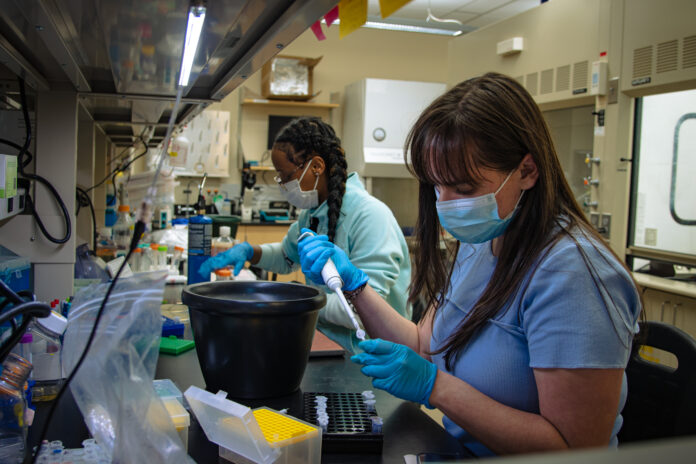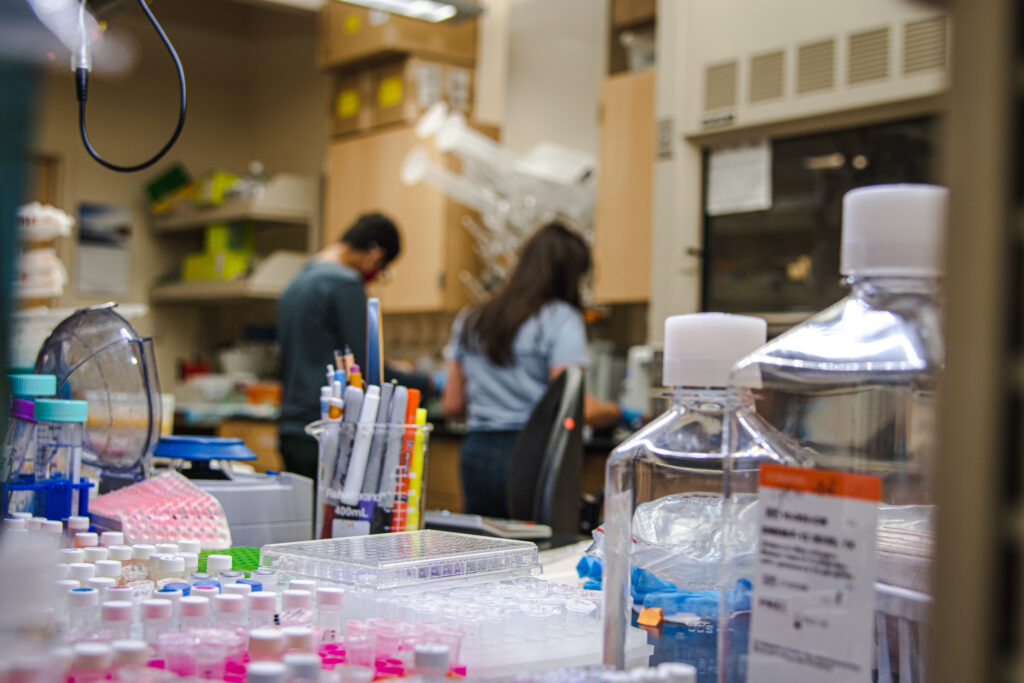
A UNLV program that collects and observes wastewater now is expanding its range to also test for the influenza virus, as it proved successful in early detection for COVID-19.
“This is an early warning system for our community,” said Edwin Oh, UNLV assistant professor and head researcher on this project. “This is an early warning system that will let us know maybe a few days, a few weeks and depending on the circumstances, potentially a month, before we see spikes of a viral condition due to a certain strain.”
The technology allows Oh to know what mutations are present in the community. The reason they can detect the couple of pathogens in wastewater is because every virus that enters into the system gets shed through fecal matter and will enter into the sewage system, according to Oh.
“This has been an extraordinary resource for us to be able to get a sense of the health of a community,” said Oh.
This program has allowed Oh and his team to detect spikes, along with new variants of COVID-19 in communities before official cases were found through testing.
In December of last year, they detected the Alpha variant of COVID-19 in samples at least a month before the first human cases were observed in January and February.
Recently, collaborators in Reno were able to detect the new Lambda variant in their population. However, this stain lasted a short time because it was overtaken by the delta variant, showing just how dominant this variant of COVID-19 is.
“It’s a program that was originally designed for the simple purpose of detecting the absence or presence of a pathogen like SARS-CoV-2 in Southern Nevada,” said Oh. “Over the last 12 to 15 months, we’ve improved our technology to the point where we think we can not only detect this pathogen called SARS-CoV-2, but also other viruses and bacteria, and drugs of abuse. In this case, we’re specifically targeting influenza.”
The lack of a flu spike earlier this year was likely due to COVID-19 restrictions, and with those restrictions beginning to lift, we are at risk of a future spike in influenza, according to Oh. He also expressed concern over the possibility of catching both COVID-19 and the flu at the same time, which “preliminary data” suggests could lead to a more severe outcome.

Oh also noted the benefits to the flu vaccines that the program’s expansion could bring. The analysis of the entire genome of the virus allows for researchers to view which specific strains are prevalent, and also how well the vaccine is stopping them.
This is particularly relevant for influenza, since seasonal flu vaccines are often developed a year in advance and only have an effectiveness of 40 percent to 60 percent, according to Oh and an official UNLV news release.
As the project moves forward with the addition of influenza testing, Oh and his team look forward to future expansion.
“We’ve coined this idea for our group, in that we want to develop a program that focuses on urban pandemic preparedness,” said Oh. “ We want to be ready when the next pathogen enters our system. The amount of chaos that has occurred over the last 12 to 15 months resulted because, in part, we weren’t ready to be able to detect this virus in our community.”
As well as being an early detection system for the next global pandemic, the program can also serve as a monitoring tool for drug abuse in various communities.
This program was made possible through the collaboration with pillars of public health like the Southern Nevada Health District and the Water Authority, according to Oh.
“In addition to the community partnerships, none of this work also would have been possible if it weren’t for the undergraduates in the lab,” said Oh. “A lot of our undergraduates went out and lifted these manholes and went down with a stick and sampled that water and brought it back and processed that information…If it weren’t for folks at UNLV, we wouldn’t have a program.”
